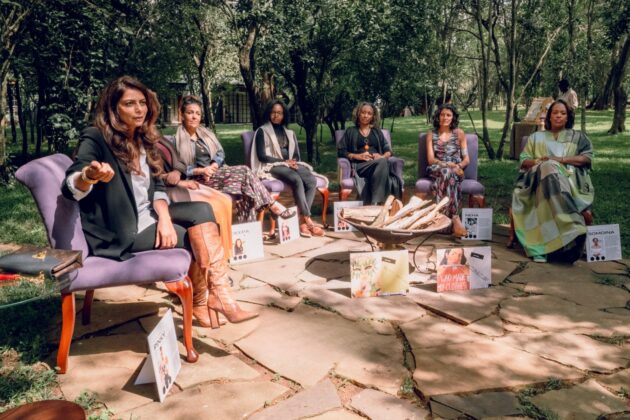
Fashion Needs a Rethink, and African Women Are Leading the Way » Capital News
NAIROBI, Kenya, Jul 17 – Sitting under a quiet tree canopy in Nairobi’s Karen suburb, I found myself part of a conversation that was deeply rooted, timely and necessary. It was not a panel. It was not a fashion event. It was something much more rare: an honest, cross-generational gathering of women asking how Africa’s fashion story could be redefined for the better.
At the centre of this roundtable was Pat Mitchell, a global media icon and the first woman president of PBS. Her presence carried weight, but her words carried even more. “You don’t have to be fearless,” she said, pausing with intent, “but you must be brave.” That single statement set the tone for what became a transformative afternoon.
The roundtable, curated by Linda Murithi of The Core Fashion Kenya, brought together women who are shaping the future of African fashion and design through sustainability, culture and storytelling. Held at Hemingways Eden Residence, the setting was fitting- beautiful, but quiet. Elegant, but real. It gave us space to listen, reflect and speak without the noise that so often surrounds the fashion world.
What struck me most was the clarity and alignment in the room. From fashion entrepreneurs and media strategists to regenerative designers and textile recyclers, each woman brought her truth with humility and strength. Collectively, they offered a clear message: if African fashion is to thrive, it must be intentional, locally led, and values-driven.
In one powerful segment, the panellists, including Neha Parmar, Nathalie Botango, Nyokabi, Lisa Kibutu, Pinky Ghelani and Somoina Kimojino, spoke about the need to preserve craftsmanship, invest in sustainability and protect creative labour from becoming another form of exploitation. Their words were different, but their message was the same. Fashion is not just about clothing. It is about people. About systems. About care.
I left the event asking myself what bravery looks like in the context of fashion in Africa. Is it about building new collections every season? Is it about gaining international recognition? Or is it something deeper: the courage to question fast fashion, to slow down production, and to reframe fashion as a tool for storytelling, dignity and justice?
As someone who works in communications, I’ve often admired how fashion shapes culture. But I’ve also grown increasingly aware of how dangerous that power can be when used without responsibility. When global fashion media chooses what and who to spotlight, African designers and artisans often get reduced to “inspiration” rather than being treated as industry leaders in their own right.
This experience taught me that changing the fashion industry is not just about better designs. It is about designing better values into the systems themselves. This includes how fashion is funded, who gets access to markets, and how the media documents and amplifies the work.
It also includes rethinking success. Too often, success in fashion is defined by speed, scale and profit. But what if success looked like cultural preservation, environmental healing and financial fairness for artisans and small businesses?
One of the most profound moments of the roundtable was the silence after Pat Mitchell reminded us that if we are not telling our own stories, someone else will and their version may not serve us. That silence stayed with me. It reminded me that storytelling is not just about being seen. It is about being understood. And it begins with taking ownership of our narratives, not waiting for global validation.
As I reflected on the conversations from that day, I saw more than an industry. I saw a movement. A slow, deliberate, deeply rooted shift driven by women who are refusing to follow systems that have never worked for them. Women who are building new systems
instead. Women who are using design, communication and collaboration to protect their work and their future.
This is what bravery looks like.
If African fashion is to have a future that serves our people, environment and culture, then it cannot simply chase visibility. It must define its own value. And that begins not with branding or trends, but with spaces like the one we shared that day- spaces where truth can be spoken, vision can be aligned and action can begin.